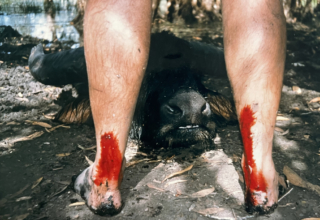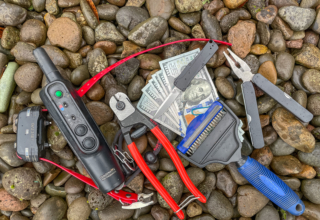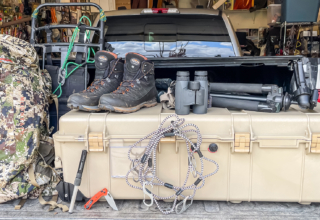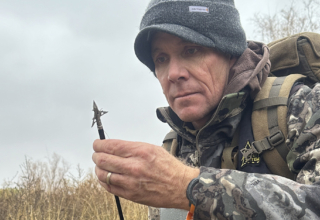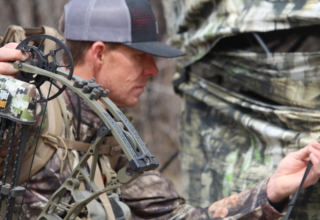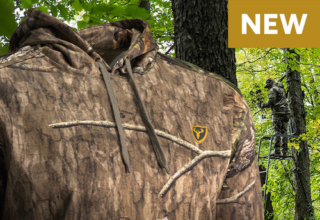Arguably one of the planet’s most challenging and sought-after elk species, the Roosevelt is a must-hunt animal. However, being prepared physically and mentally is a Roosevelt elk must. Let’s dive in.
by Scott Haugen
Through a thick curtain of fir trees, a Roosevelt bull quietly materialized on the steep hillside. It came in silent to my calls, as is often the case with this elk species. It stopped, stood still as a statue for what seemed an eternity, and looked and listened for the cow.
Its moist, black nostrils pumped the air for clues. Its ears rotated like satellite dishes, searching for sounds. Then its big eyes rolled back as the bull lip curled, urinated, and thrashed a fir tree less than 20 yards from where I sat.
The heavy-racked, massive-bodied bull was the one I was after. I’d caught the bull on multiple trail cameras and saw brief glimpses before the season while scouting. It was close, but the brush was so dense I could not thread an arrow through it.
As quickly as it all came together, it suddenly ended when another bull unexpectedly approached from behind me. It caught my wind, and my hopes of arrowing a 330-inch class brute of a bull vanished just like that.
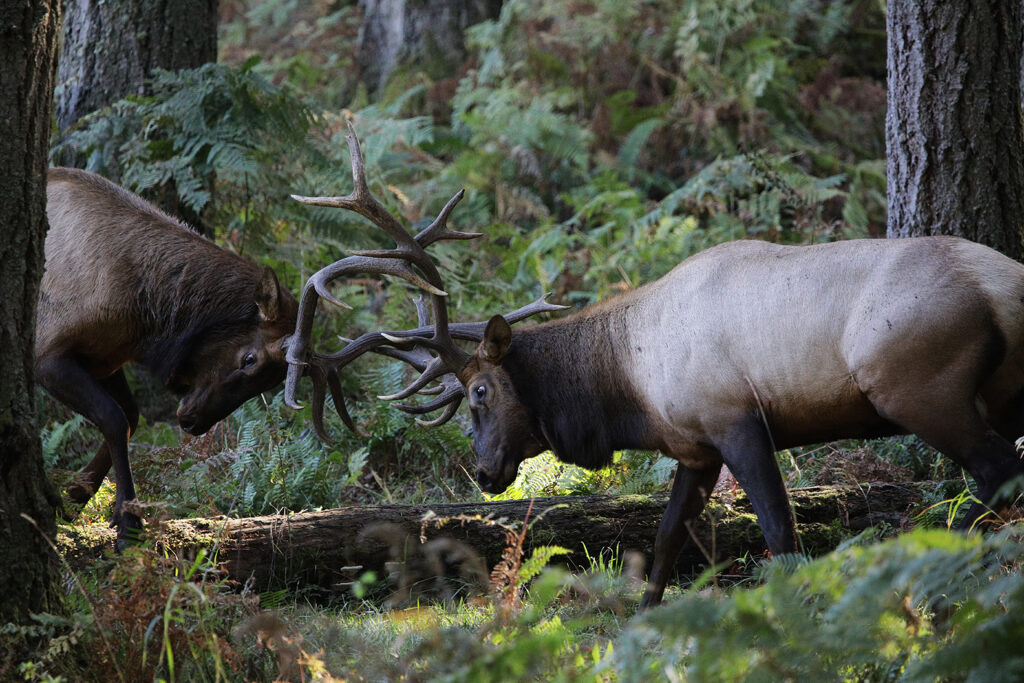
That was the last time I saw that giant bull during the month-long archery season. With these elusive ghosts of the forest, you usually only get one chance, often never seeing them again.
Roosevelt Elk
Roosevelt elk are the largest-bodied elk subspecies in North America. Bulls can live into their teens and tip the scales to over 1,200 pounds. Mature bulls average about 900 pounds on the hoof.
Named after President Theodore Roosevelt, who established what is now Olympic National Park in Washington state to preserve these elk, Roosevelt elk live in the Coast Range and western slopes of the Cascade Range from northern California, through Oregon and Washington, into southern British Columbia. Roosevelt elk also exist on Alaska’s Afognak and Raspberry islands, where bulls can weigh more than 1,300 pounds.
Roosies — as the locals know them — are darker colored than their smaller-bodied and more popular Rocky Mountain cousins. The antlers of mature Roosies are also darker, more massive, and more compact than those of Rocky Mountain bulls. The largest typical Roosevelt bull ever taken by a rifle hunter scored 404 6/8″. The bull was shot less than an hour from my Oregon home. I was fortunate to help officially score that bull, an experience I’ll never forget.
So Hard!
I rank consistently tagging a mature Roosevelt elk as the second most challenging big game hunt in North America — second only to Columbia black-tailed deer who share the habitat. Yes, sheep and goat hunts are more physically demanding, but your chances rise if you’re in shape. With Roosevelt elk, no matter how hard you work or how good of shape you’re in, it may take years to fill a tag. When hunting Roosevelt elk, nature owes you nothing; self-pity won’t fill your tag.
Over-the-counter tags and a lot of public lands exist in Roosevelt elk country. But just because a tag is easy to get, don’t be fooled into thinking it’s simple to fill. I’ve talked to countless people who’ve hunted Roosies for over a decade and never fired a shot. Some have never seen a bull during hunting season.
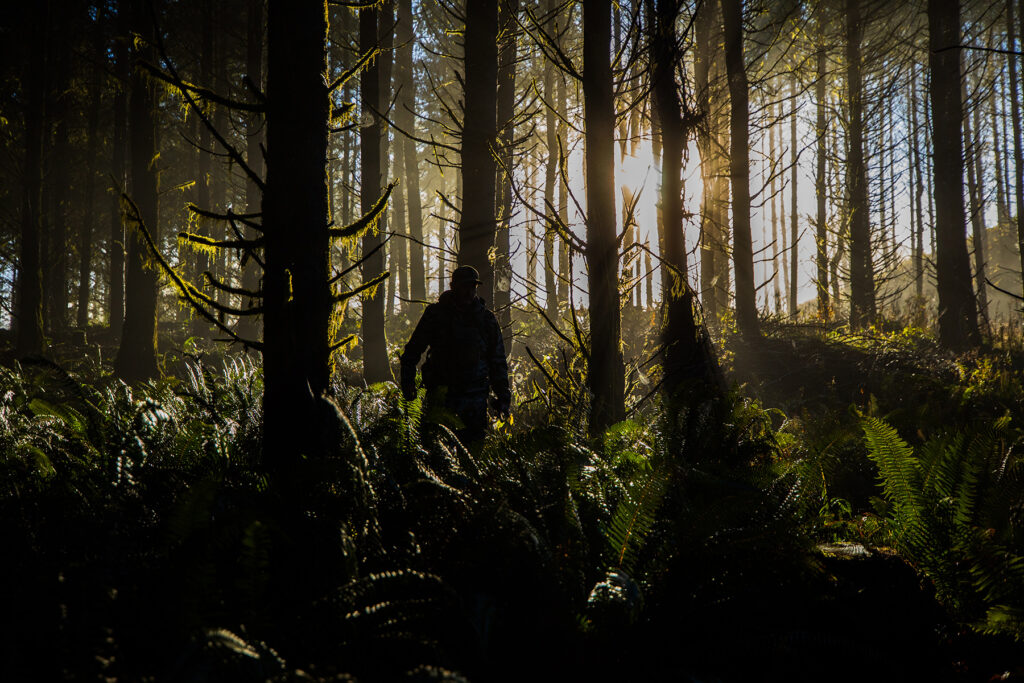
Roosevelt elk graze and browse. Bulls gather harems during the September rut, but once that’s over, big bulls typically recede into the deepest, darkest canyons, usually by mid-October. These elk are hunted throughout their range from September to January by hunters packing bows, rifles, and muzzleloaders.
Go With The Bow
“Not many hunters realize how physically demanding a Roosevelt elk hunt can be,” shares noted guide Jody Smith of Elkton, Oregon. Smith is a sixth-generation resident of this tiny Oregon community in the Coast Range.
“Parts of the Coast Range are much like the Rocky Mountains in terms of elevation and ruggedness,” Smith continues. “Cover that in the jungle-like brush, and it’s a wonder anyone ever sees a Roosevelt elk, let alone fills a tag.”
Archery hunters have the best chance of encountering a Roosevelt bull as the September season runs through the peak of the rut. Searching for a herd of elk in September is much easier than locating a lone, silent, often sedentary bull in October and November.
“I know a lot of rifle hunters who’ve turned to bowhunting for Roosevelt elk to increase the odds of simply seeing one,” says Smith.
Roosevelt bulls are notorious for coming in slow and silent to hunters who are calling them. On one hunt I shared with Smith, we had two bulls bugling, which was a rarity on public land. However, no matter how hard we tried, the bulls wouldn’t budge. Then we heard the shuffling of leaves coming up the canyon right at us. Pivoting on my backside, I saw antlers as a third bull headed our way. I reached full draw as Smith cow called, stopping the bull in its tracks at 15 yards. I let the arrow fly and immediately started cow-calling fast and loud. The bull stopped, turned, and trotted back at us, dying five yards from where I’d arrowed it.

Rifle Is Possible
If you want to rifle hunt for Roosevelt elk in the Cascade Range, Oregon’s season opens for about a week in mid-November. Western Washington — both the Cascades and the Coast Range — typically opens for 12 days during the first part of November. Oregon has two November rifle hunts in the Coast Range, and both states offer muzzleloader hunts throughout the winter months. California has minimal Roosevelt elk hunting opportunities.
“Hunters need to realize when rifle hunting for Roosevelt elk that these bulls have been pressured for a month by archers trying to get close to them,” points out Smith. “The elk know what’s going on, and the biggest, smartest bulls hold up in cover so thick and rugged that it can be impossible to find them.”

Some of the most successful Roosevelt elk hunters are those who put a pack on their back and hike into the deepest, darkest canyons, cut a bull track, and follow it until they catch up. This may mean leaving two hours before sunrise and coming out of the woods well after dark, but if you want a big bull, that’s the kind of effort it often takes.
So Big
“Another thing people need to understand is the size of these elk and how tough they are,” said Smith. “A bull, even a cow, can absorb a lot of lead, even on perfectly placed shots.” Smith suggests rifle hunters come in with no less power than a 7mm or .300 magnum with well-constructed bullets.
No matter how you hunt Roosevelt elk, be prepared. You must be able to walk in and out of the woods in the dark, use a navigation device, withstand torrential downpours, and patiently wait several hours for dense fog to lift. Then again, rainy, windy, foggy weather can be the best conditions to hunt these jungle-dwelling beasts.
Before leaving home, contact regional fish and wildlife personnel to learn all you can about where to hunt Roosevelt elk. The Cascades and Coast Range are big and rugged, and having a starting point before the season begins is essential. If you have time to scout in the summer, that’s even better. Roosevelt bulls are most visible in June, July, and August, when their growing antlers are in full velvet.
Once an elk is down, start field dressing and quartering it, even if it takes all night. A high percentage of Roosevelt elk are shot in the first and last hour of the day. If you shoot a Roosevelt right before dark, be willing to follow the blood trail, quarter the animal, and pack it out in the dark. It might take the entire night into the next day, but that’s West Coast elk hunting. These elk have massive muscles, and the large bones retain a lot of heat, so quickly break down the bull, or it will spoil.
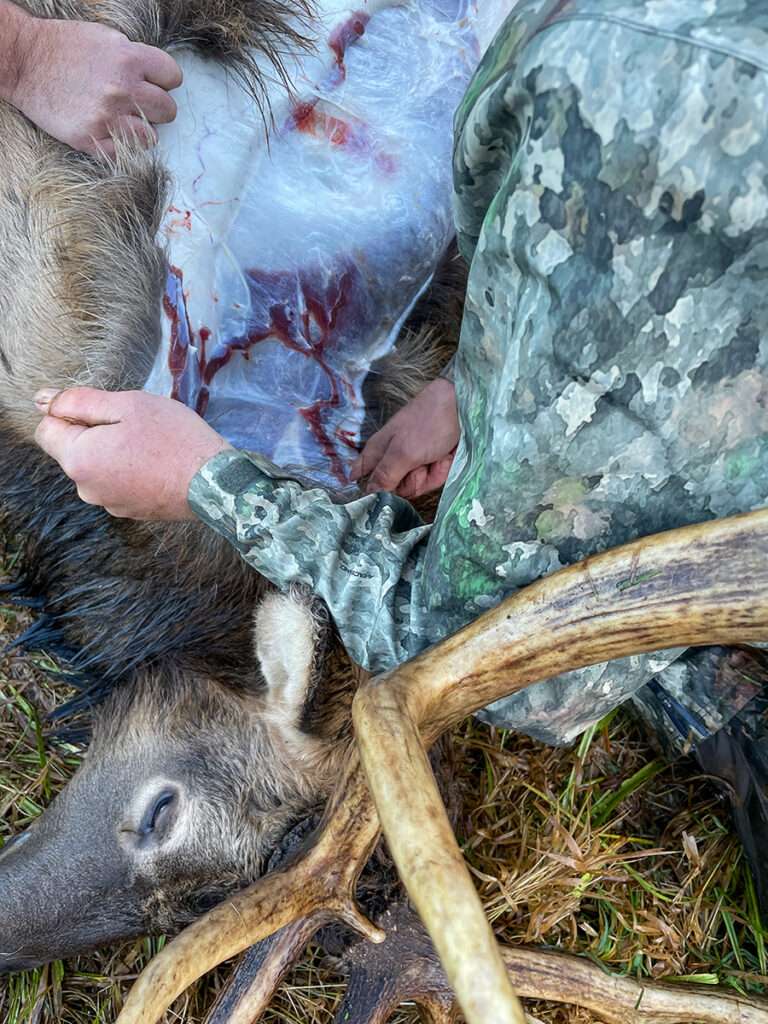
Get in shape, do your homework, and be patient yet persistent, and you’ll be in an excellent position to hunt Roosevelt elk. Once you see the magnitude of the land these giant elk thrive in, you’ll understand why many avid hunters chasing the North American big game slam wait to pursue Roosevelt elk until the end.


